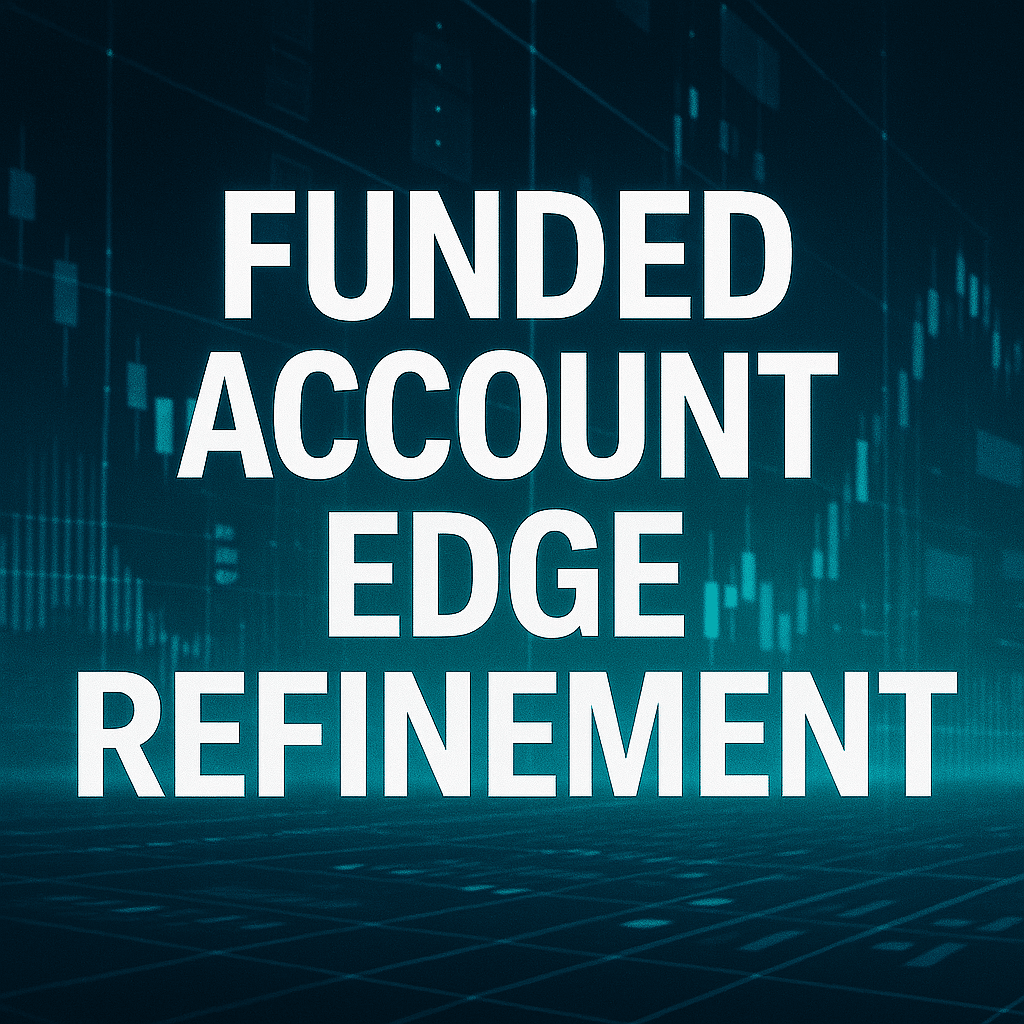Introduction: Mastering Funded Account Edge Refinement
Once you’ve passed the evaluation and reached the live phase, your mission shifts from proving consistency to preserving and maximizing performance. This is where funded account edge refinement becomes vital. Traders who succeed long-term continuously adapt their strategies to real market conditions. While many believe the hard part ends with passing the challenge, the live phase presents its own risks and responsibilities. In this article, we explore how to sharpen your edge, reduce risk, and thrive in funded trading.
Why Refinement Matters in the Live Phase
Getting funded is only half the battle. The live account comes with real capital allocation, psychological pressure, and stricter consequences. Every mistake costs more than just progress—it affects real profit and credibility.
Refining your edge at this stage helps you:
-
Maintain consistency under live pressure
-
Adapt to evolving market conditions
-
Strengthen confidence in execution
-
Improve your reward-to-risk metrics
-
Align trading performance with funding firm expectations
Moreover, continual refinement separates long-term professionals from lucky passers. With the right mindset and tools, you can treat the live phase as a growth environment instead of just a payout opportunity.
Assessing Your Current Trading Edge
Before making adjustments, understand your current edge. What’s working? What isn’t?
Start by reviewing your most recent trades based on:
-
Entry timing and precision
-
Risk-reward consistency
-
Trade duration and holding behavior
-
Common drawdown patterns
-
Psychological mistakes (revenge trading, overtrading, hesitation)
This audit highlights blind spots that often go unnoticed during simulated trading. Live trading adds elements like emotional impact and accountability, which must now be part of your edge evaluation.
Tools That Support Funded Account Edge Refinement
Successful edge refinement involves consistent feedback loops. Here are essential tools to support that:
-
Trade Journals: Keep a detailed log of every trade. Include reasons for entry/exit, screenshots, and emotions felt.
-
Weekly Recaps: Dedicate time every weekend to recap and rate the quality of decisions made—not just outcomes.
-
Performance Metrics: Use tools like win rate, expectancy, average risk per trade, and max consecutive losses.
-
Trading Plan Revisions: As you evolve, so should your written trading plan. Update it monthly to reflect what works.
These tools build a systemized process around edge refinement and promote objective thinking.
Subtle but Powerful Refinement Techniques
1. Optimize Risk Allocation
Even small tweaks in position sizing can significantly impact longevity. Consider adapting risk dynamically depending on market volatility or recent performance. Use trailing stop-loss mechanisms when in profit to reduce exposure without limiting opportunity.
2. Time Filtering
Funded traders often benefit from cutting out low-volume or erratic time periods. Refining your edge may involve trading only specific sessions, such as London open or NY overlap, and avoiding periods like mid-day drift or holiday ranges.
3. News Filtering
Refinement includes choosing which events to trade or avoid. Not all volatility is favorable—sometimes, stepping aside during scheduled news releases protects your edge more than chasing fast profits.
4. Reduce Trade Frequency
Sometimes, less is more. High-frequency trades in the live phase can drain emotional energy and increase mistake likelihood. Focus on quality over quantity to preserve your edge.
Funded Account Edge Refinement: Psychological Tactics
Performance isn’t just technical—it’s deeply psychological. Your mindset in the live phase determines how effective your edge can be.
Here are a few tactics that boost psychological strength:
-
Detach from the Outcome: Focus on execution quality, not just profit.
-
Routine Anchoring: Build a consistent pre-market and post-market routine.
-
Visualization: Before trading sessions, mentally rehearse ideal setups and positive outcomes.
-
Micro Goals: Set small, process-driven goals (e.g., “Follow stop-loss rules 100% this week”) to avoid fixation on profits.
These practices reinforce discipline and clarity, both of which are essential during edge refinement.
When to Adjust and When to Stay the Course
One common mistake in funded account edge refinement is over-tweaking. Every trader has losing streaks—even with a working strategy.
So, how do you know if it’s time to adjust?
Refine only if:
-
Your drawdown pattern is recurring and tied to the same type of trade
-
You’re consistently breaking rules or hesitating due to lack of clarity
-
New market conditions have changed your setup’s effectiveness
Avoid making changes after just one bad day or emotional reaction. Use data to decide, not impulse.
One Edge Is Not Enough: Build Multiple Layers
Great traders build multiple edges across their system. This might include:
-
A technical setup (e.g., breakout + volume)
-
A timing edge (e.g., trading only specific hours)
-
A psychological edge (e.g., resilience under pressure)
-
A risk management edge (e.g., trailing profits instead of fixed exits)
Each layer adds durability to your system and protects you when one element underperforms.
How Larsa Capital Supports Long-Term Refinement
At Larsa Capital, funded traders are encouraged to treat the live phase as an evolution, not a finish line. By providing consistent payout schedules, clear risk parameters, and fair rules, we empower traders to focus on building a long-term professional edge.
Our environment rewards discipline, adaptability, and growth—not just one-time success.
Final Thoughts
Funded account edge refinement is not a one-time task—it’s a continuous process. The live phase is where true traders are made, not just by profits, but by how they adapt, evolve, and stay sharp under real pressure.
Stay disciplined. Stay objective. And always keep refining.

